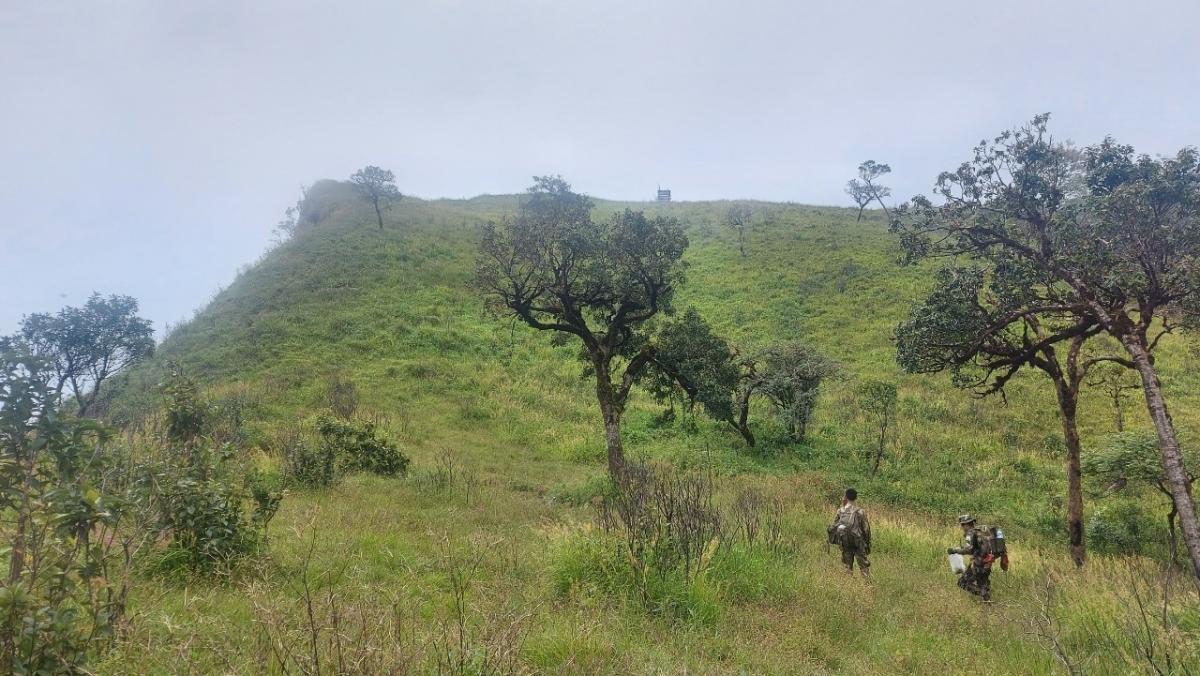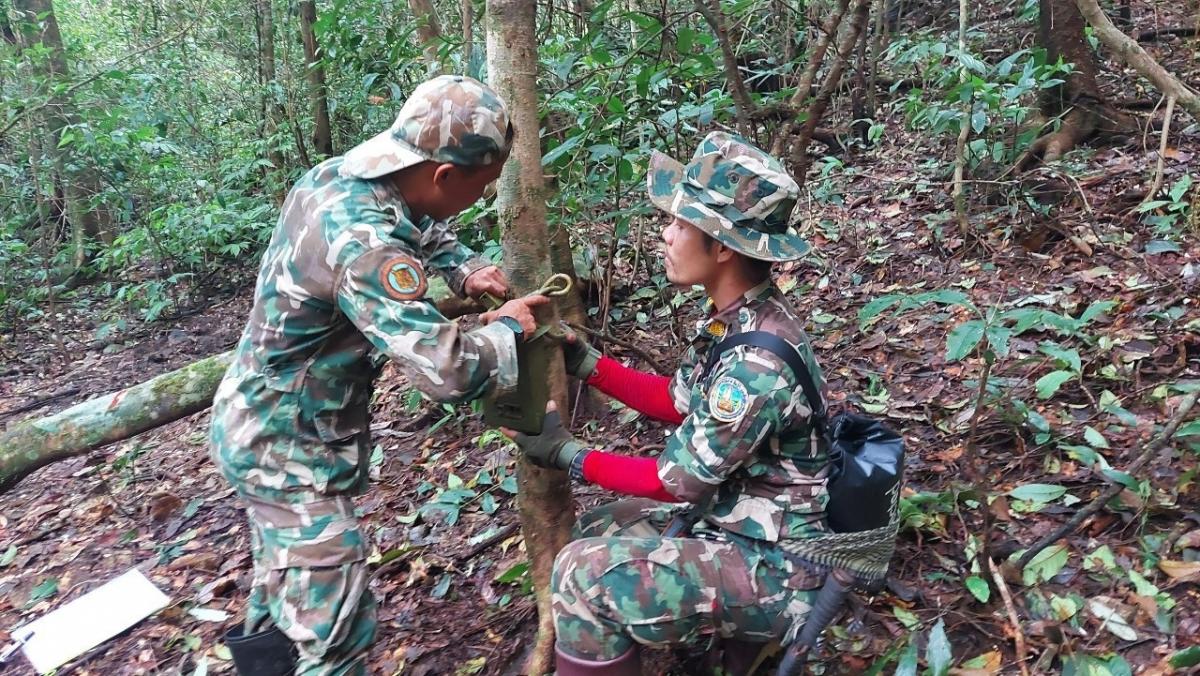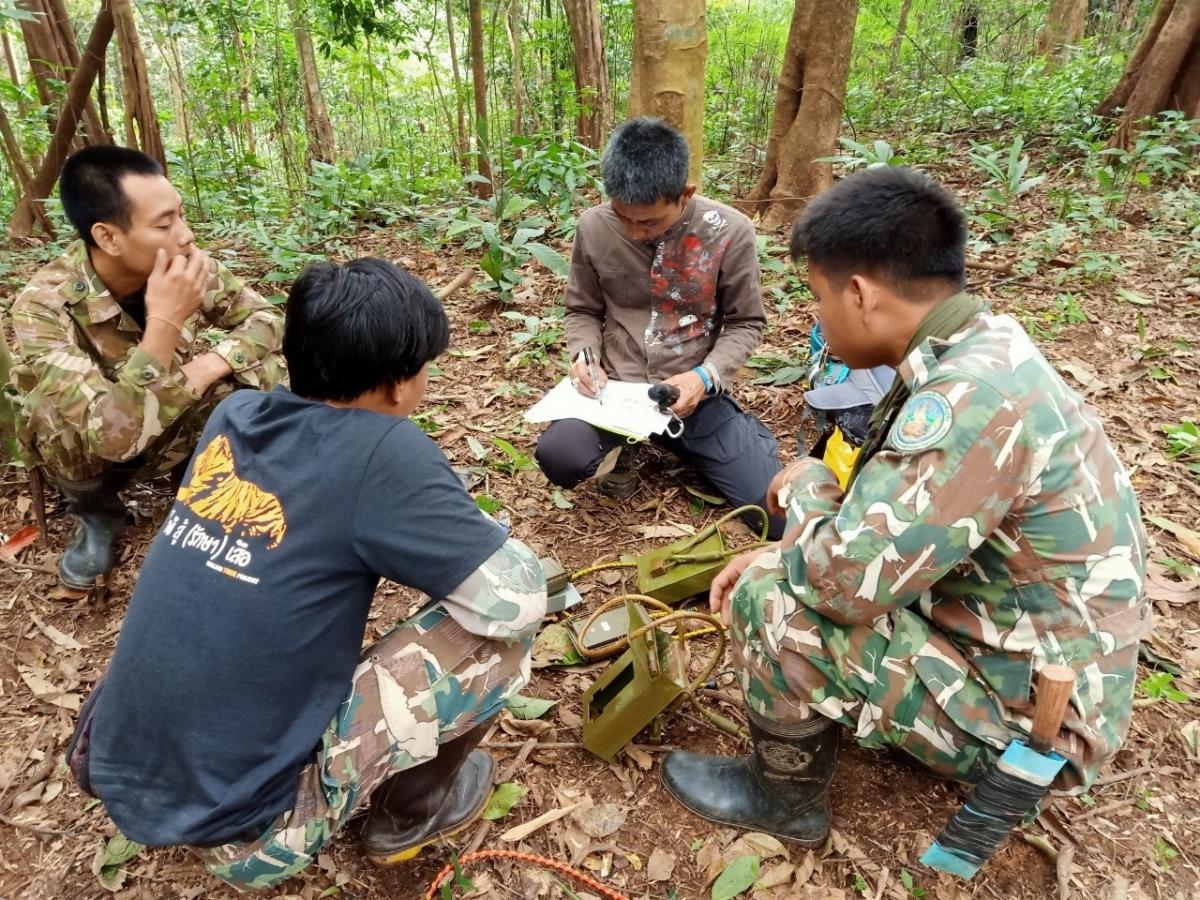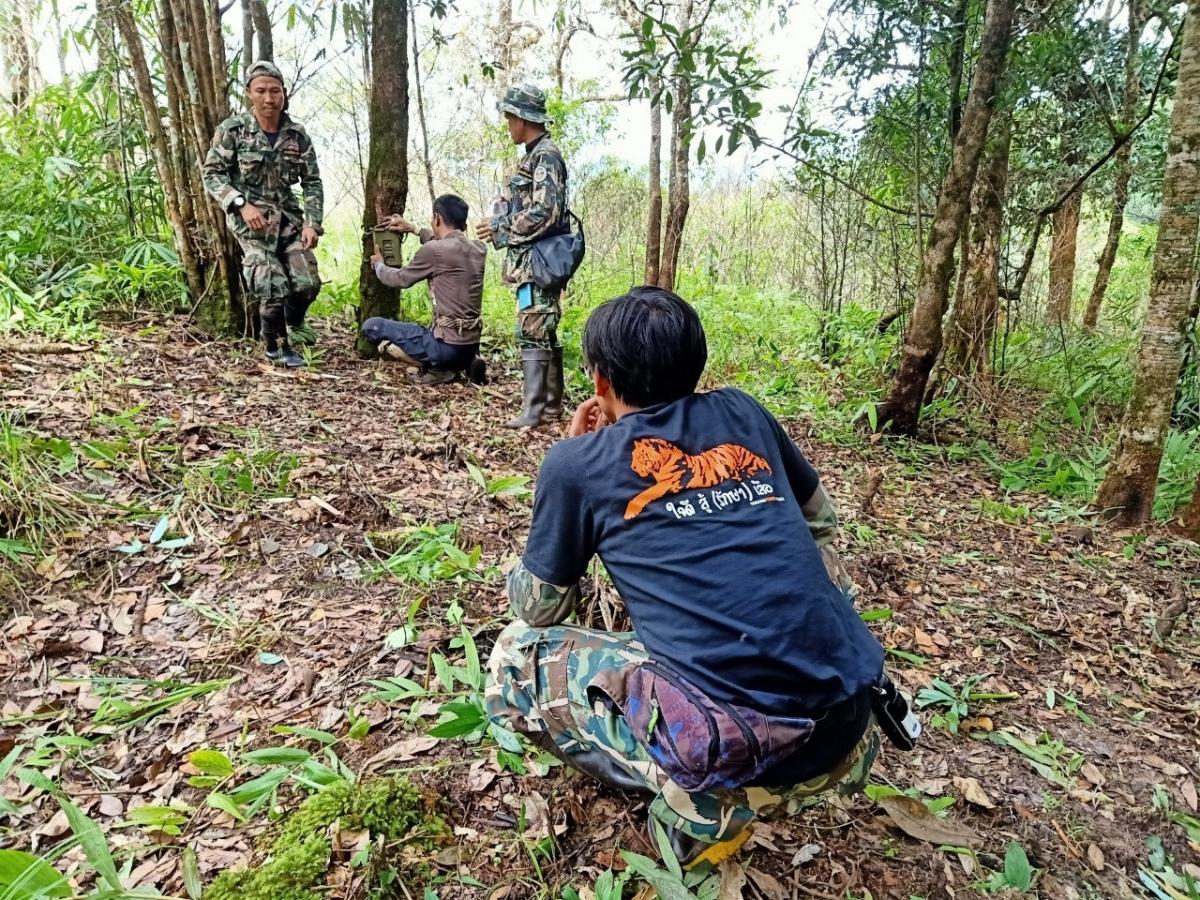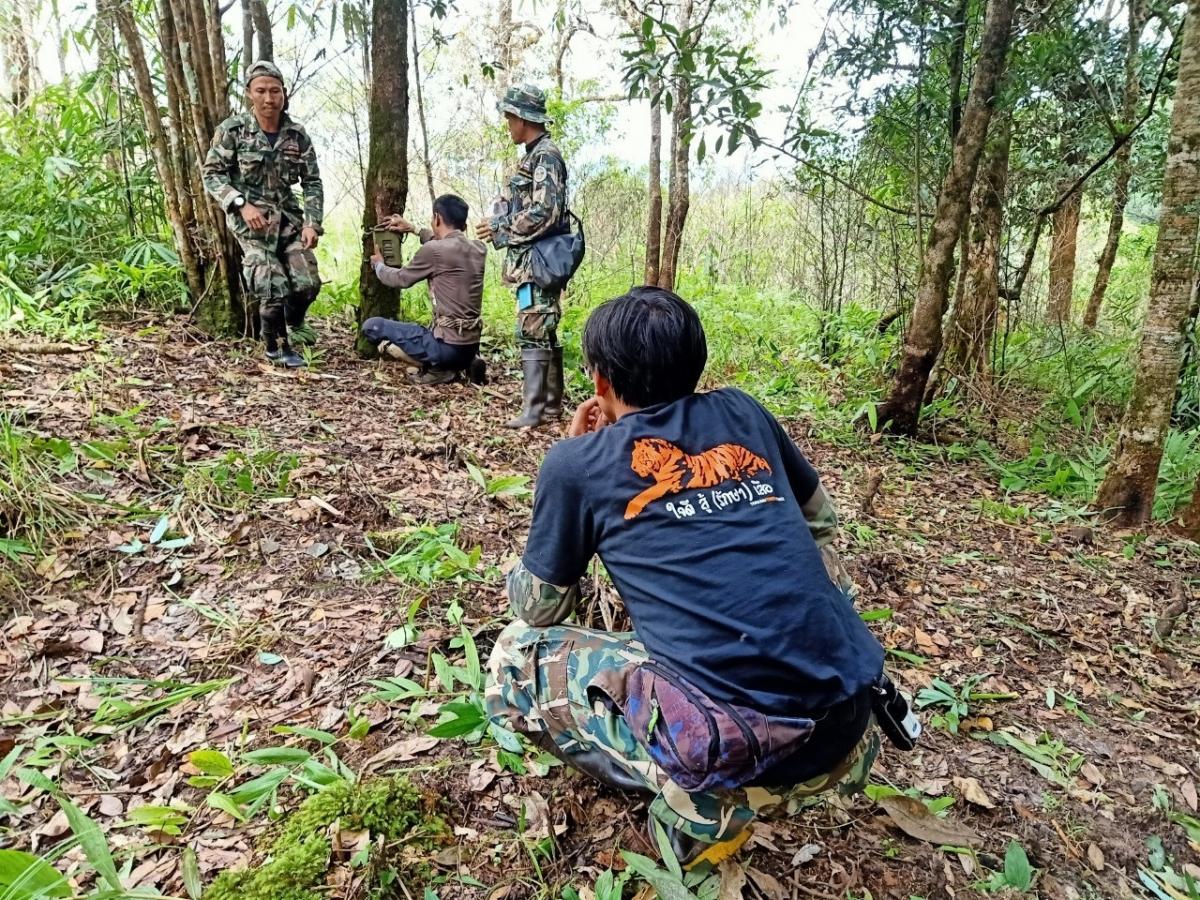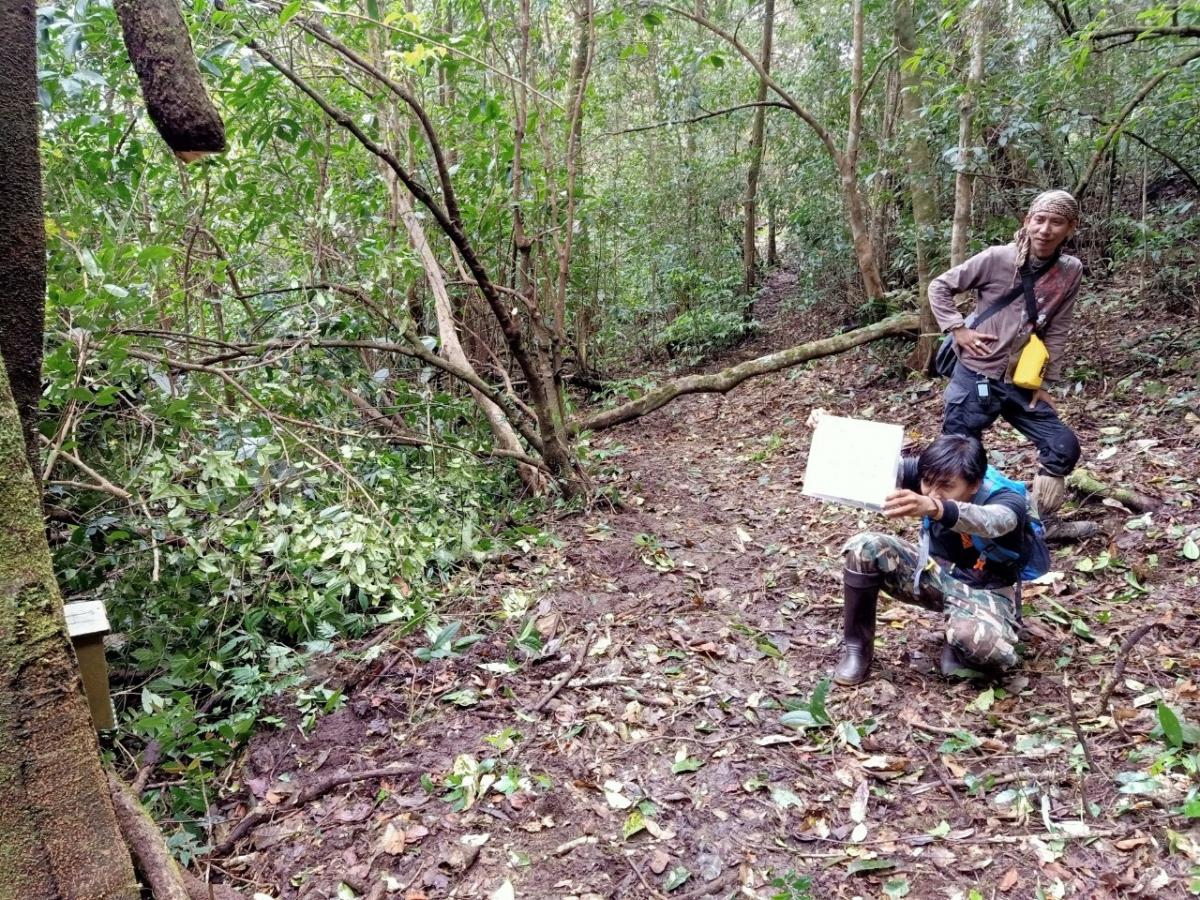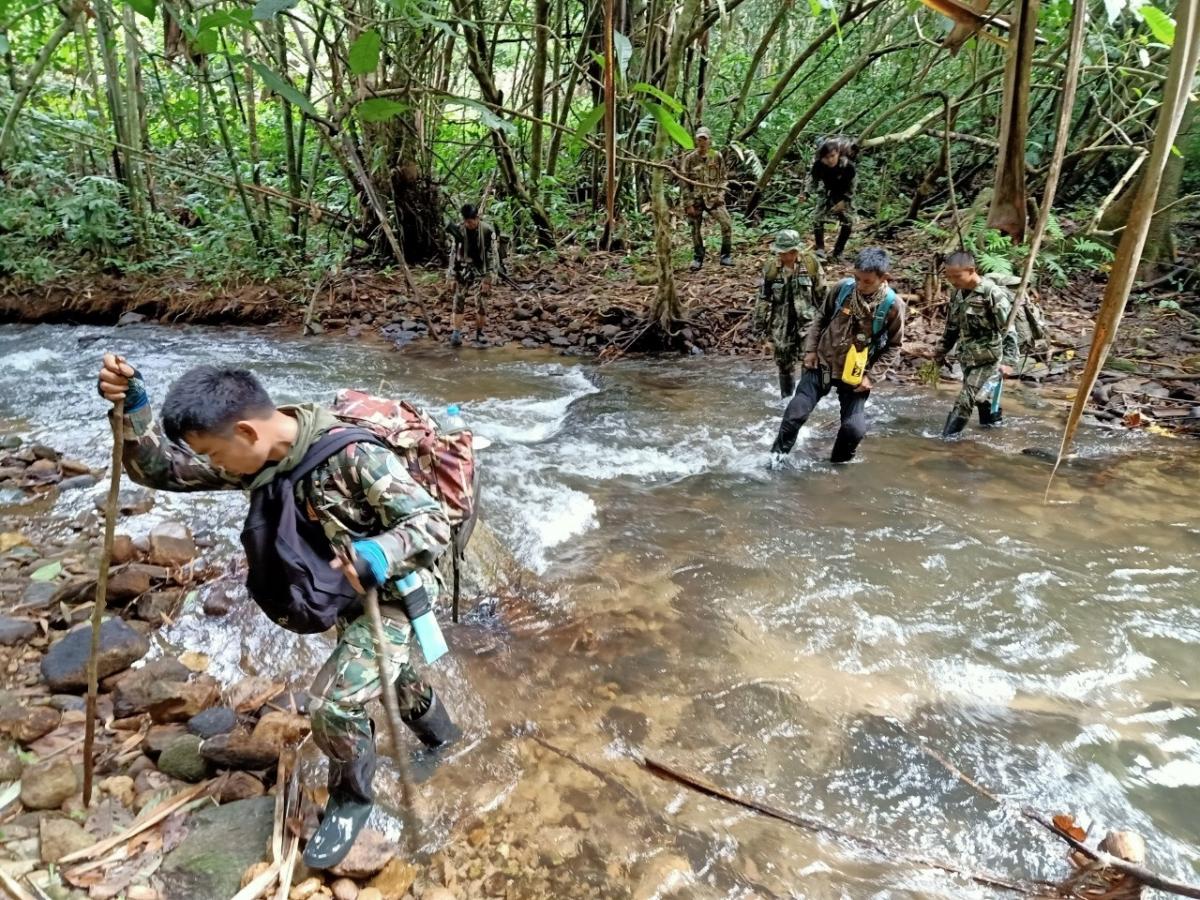Strengthening transboundary corridors for tigers in Thailand and Myanmar
To better understand the distribution and relationship between tigers and their prey species, IUCN, with funding from a private foundation in The Netherlands, has issued grants to Panthera/Zoological Society of London and FREELAND to deploy 337 camera traps in four protected areas in Thailand’s Western Forest Complex (WEFCOM) near the Myanmar border. The results will be used to map tigers and their prey species as the basis for designing management interventions to increase prey numbers and tiger recovery in Thailand and eventually in Myanmar.
WEFCOM is a 1,870,000-hectare protected area complex made up of 19 national parks and wildlife sanctuaries, including the Huai Kha Khaeng (HKK) World Heritage Site (https://whc.unesco.org/en/list/591). It is home to about 160 tigers, by far the largest population in Southeast Asia. Most of the conservation effort has gone into HKK, which is where almost all the tigers are found.
Research in WEFCOM has uncovered a paradox. Despite intensive protection efforts by Thailand’s Department of National Parks (DNP), the tiger population appears to have plateaued. The conclusion is that outside of HKK the prey base has been depleted to the point where it cannot support a larger population. In other words, WEFCOM’s tiger population is at carrying capacity, where the existing prey base cannot support a larger tiger population.
In Myanmar, tigers have been reduced to a few small populations of questionable viability, including in the 1,000-km forest corridor running along the Myanmar-Thailand known as the Dawna-Tenasserim Landscape (DTL).
The future of tigers in the DTL depends critically on their dispersal out of HKK, across southwestern WEFCOM, and into Myanmar. If this dispersal is hampered by the lack of food or safe habitat, Myanmar will end up like Cambodia, Lao PDR, and Viet Nam with no wild tigers and no prospect of natural recovery. Ensuring biological connectivity is thus key to the future of Myanmar’s tiger population.
In October 2020, a training session was organised for DNP rangers who will be responsible for deploying the camera-traps over the next six months.

